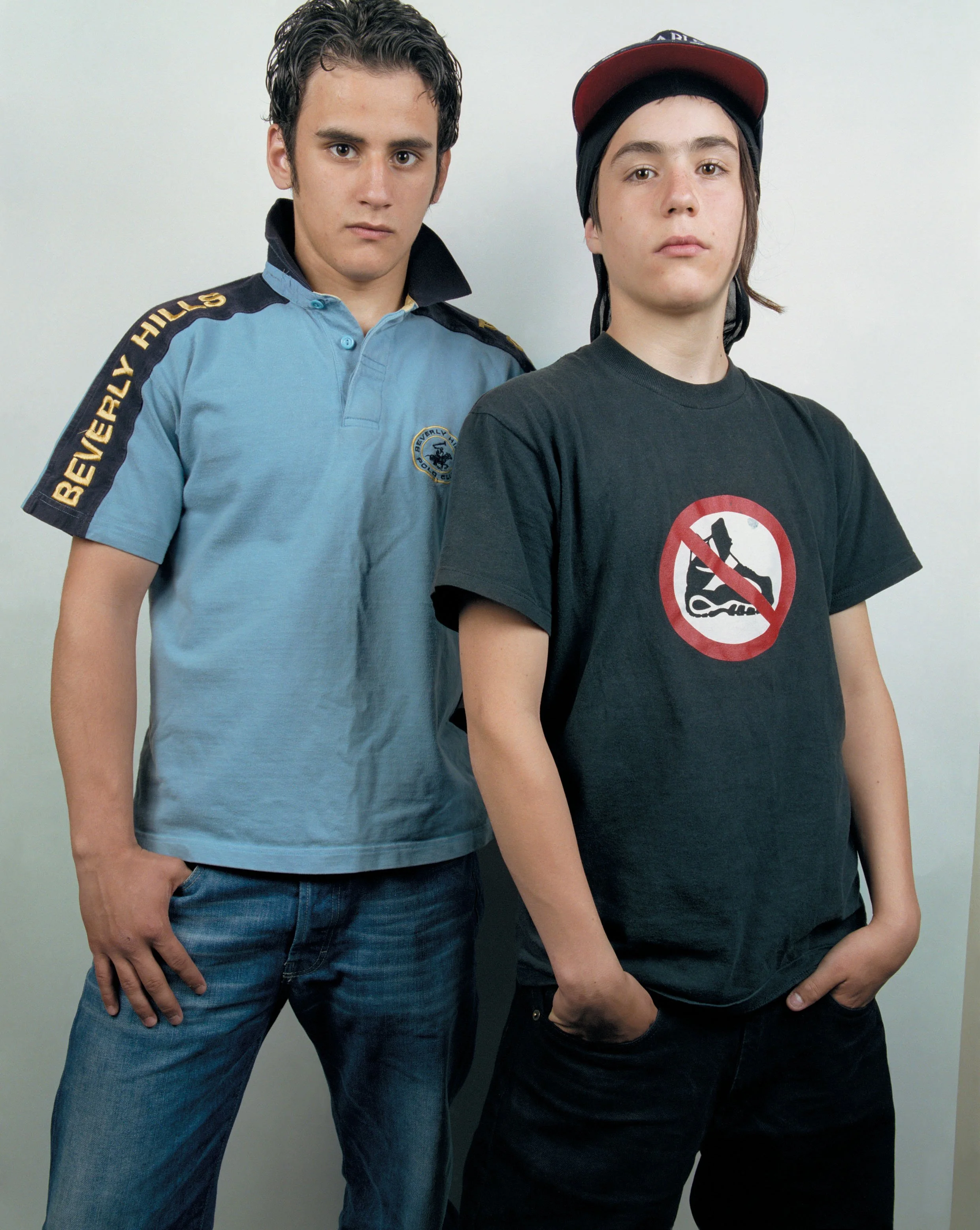RAW YOUTH
Lars von Trier presents a dogumentary by Margreth Olin
A lot of lies are told about being a human being.
Most lies are told about the youth. But once we are grown up, we start missing our youth. We start looking back only to find that we have lost the language, because the youth has a language of its own. We dare not go and look for them, ask them who they are, where they are going. Youth is not ours anymore, that is why we lie about who they are. The film follows students from the 10th grade at Hauketo Continuation School, East Oslo, the last few months before the exams. This is a new Norway. A new Europe. The classroom is the real UN. It is the time of opportunity – when children from all around the world come together, and become each others best friends and sweethearts at an early age. The chance is now – if we wish.
Watch the film HERE
Director Margreth Olin's statement
At our first meeting, von Trier talked about the absence of the director, that the world can not be confined or contained by a ”story”, and about emphasising what is also in defocus. The set of rules invoke an honesty towards those who are in the film and towards those watching it. The latter, I believe, is nothing new. A dogumentary can never be better than the circumstances it is based on, the relation between those in front and behind the camera. A dogumentary is a journey through known and unknown landscapes. If you succeed, you were surprised en route and the film is created along the way and not at the desk before the shooting started. For what I find at the end of the rules is the following: Life in it self is enough. In all its beauty, comedy and cruelty. Life is dramatic enough, seductive enough. Time. And the ability to see the human being in a space. The moment in preference to the whole. The set of rules is like a fine-meshed net – another way of approaching reality. For what is the endeavour of documenatrians if it is not discovering something that is real, something that is individually true. Because my truth is not your truth. The world is more fantastic than that. There is always someone who sees, someone who chooses and who opts out. The montage is the documentarians primary tool.
I have made a different film. A film different from the ones I have done before. I have always cared for being brutally honest. This is another nudity. There is nothing in between you watching and what you watch. Apparently. Because the filmmakers narrative is invisible. And therefore reality comes through harder, more straightforward, without anyone pointing and guiding you. This film is created in the meeting between your prejudice and your ability to understand another person’s feelings and to put oneself in his/her position.
But you must know one thing. The film is 1 hour out of 120 hours of raw footage. However, it is not a lie.
– Margreth Olin, September 2004
Declaration from Lars von Trier´s dogumentary manifesto, March 2000
We are searching for something that is between fact and fiction. As fiction is limited by our imagination and facts by our insight, the part of the world that we portray cannot be contained by a “story”, neither can it be perceived from a “point of view”.
What we are looking for can be found in the real world, from where the creators of fiction draw their inspiration, the reality journalists attempt to describe but cannot. They cannot show us true reality as they are blinded by their technology. Neither do they want to, as technology has become a goal unto itself, content has become secondary.
Documentarist code for “Dogumentarism”
1. All the locations in the film must be revealed. (This is to be done by text being inserted in the image. This constitutes an exception of rule number 5. All the text must be legible.)
2. The beginning of the film must outline the goals and ideas of the director. (This must be shown to the film´s “actors” and technicians before filming begins.)
3. The end of the film must consist of two minutes of free speaking time by the film´s “victim”. This “victim” alone shall advise regarding the content and must approve this part of the finished film. If there is no opposition by any of the collaborators, there will be no “victim” or “victims”. To explain this, there will be text inserted at the end of the film.
4. All clips must be marked with 6-12 frames black. (Unless they are a clip in real time, that is a direct clip in a multi-camera filming situation.)
5. Manipulation of the sound and/or images must not take place. Filtering, creative lighting and/or optical effects are strictly forbidden.
6. The sound must never be produced exclusive of the original filming or vice versa. That is, extra soundtracks like music or dialogue must not be mixed in later.
7. Reconstruction of the concept or the directing of the actors is not acceptable. Adding elements as with scenography are forbidden.
8. All use of hidden cameras is forbidden.
9. There must never be used archived images or footage that has been produced for other programs.
– Lars von Trier, Zentropa Real, October 2001
CREDITS
DIRECTOR: Margreth Olin
PRODUCERS: Carsten Holst, Karoline Leth
CO-PRODUCER: Thomas Robsahm
CINEMATOGRAPHY: Kim Hiorthøy
EDITOR: Helge Billing
SOUND: Ragnar Samuelsson, Kari Nytrø
PRODUCTION ASSISTANTS: Kari Moen, Cathrine Heltzen
EDITOR: Lars Grarup
PRODUCERS: Zentropa Real ApS, Speranza Film AS
WITH THE SUPPORT OF: The Danish Filminstitute by Jakob Høgel, Nordic Film- and TV-Fund by Eva Færevaag, Norwegian Filmfund by Harry Guttormsen and Erlend Loe, The Swedish Filminstitute by Göran Olsson, The MEDIA Programme of the European Community
IN ASSOCIATION WITH: Channel 4, YLE, NRK, SVT
WORLD SALES: Trust Film Sales




